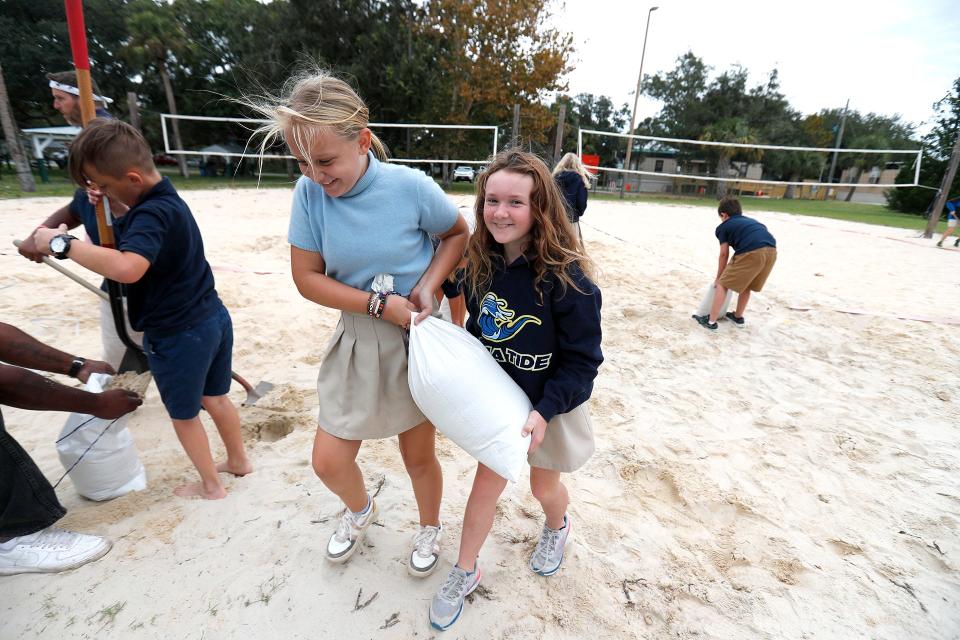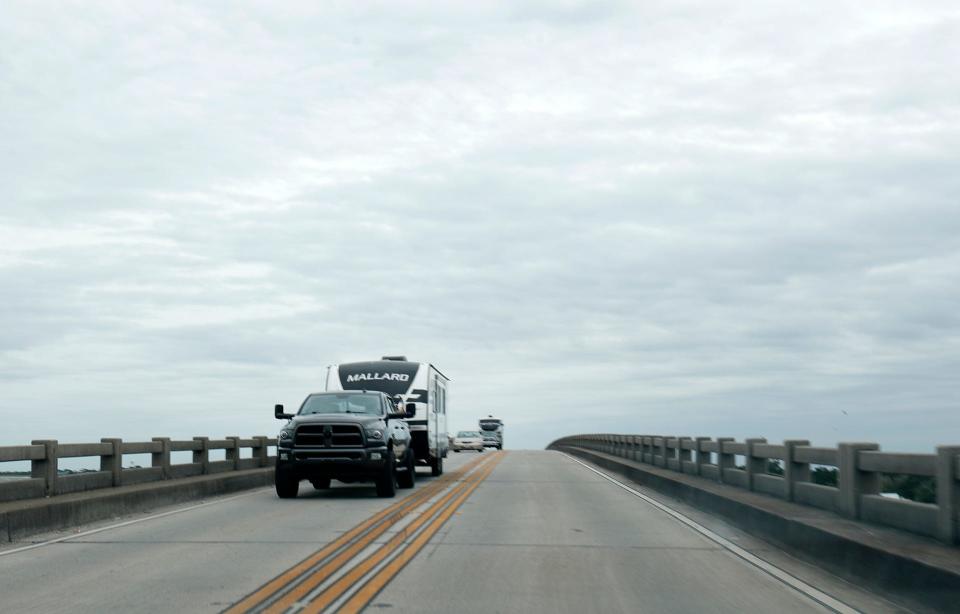Tropical storm vs. hurricane: Know the differences and what Savannah can expect from Ian
Hurricane Ian made landfall in the United States on Wednesday, coming ashore on Florida’s Gulf Coast. The storm tracked slowly across the state Wednesday and Thursday, weakening from hurricane strength to a tropical storm along the way.
Ian regained strength as it moved offshore and turned north. The latest update from the National Hurricane Center showed Ian passed east of Savannah around 8 a.m. Friday. The track of the storm meant there was no reason for an evacuation order, according to Chatham County Chairman Chester Ellis. Both Chatham County and Georgia officials did declare a state of emergency and urged residents to stay up to date on storm developments.
Take a look: See damage done by Hurricane Ian in videos showing storm surges, Category 4 winds
Storm guide for Ian: Here's what you need to know
Hurricane Ian: Savannah-area public and private schools announce storm plans
The uncertainty around Ian and the risks posed by a hurricane vs. a tropical storm prompted confusion from Savannah residents. By definition, both hurricanes and tropical storms are classified as tropical cyclones. A tropical storm is a cyclonic system with maximum surface wind speed ranging between 39 mph and 73 mph; a tropical storm becomes a hurricane when those speeds exceed 73 mph.
Here’s what else you need to know about the differences between hurricanes and tropical storms.

What’s a watch vs. a warning?
The differences between a watch and a warning are defined by what’s possible and what’s expected.
The National Oceanic Atmospheric Administration, or NOAA, issued both a hurricane watch and a tropical storm warning for Savannah on Wednesday. The hurricane watch means hurricane conditions are possible within 48 hours, while the tropical storm warning signals that tropical storm conditions are expected within 36 hours.
As Ian moves toward Savannah, NOAA updates watches and warnings. The longer the storm remains at hurricane strength, the more likely a hurricane warning. If Ian weakens as is forecasted, the hurricane watch could be removed. New advisories are issued every three hours at nhc.noaa.gov.

What damage can we expect from a tropical storm?
Tropical cyclones pose a dual threat: Wind and water. Winds can damage trees, utility infrastructure and buildings. In combination with heavy rainfall and tidal conditions, wind can also cause storm surge and flooding. These conditions can endanger life and cut off areas from emergency services, which is why the threat of a hurricane often results in an evacuation order.
The risk is lessened in a tropical storm as compared to a hurricane. Winds up to 75 mph can still drop tree limbs or even topple dead trees or uproot those anchored in water-soaked soil. Flooding is more of a concern with Ian, as Savannah’s tide cycle is near its monthly peak. As currently forecasted, Ian is likely to bring flooding along the beaches and marshlands and cause considerable street flooding in low-lying areas.
When did Savannah last experience a tropical storm?
Savannah’s last brush with a tropical storm was Hermine in 2016. The system brought wind gusts of up to 63 mph and 3 to 4 inches of rain in Savannah. The storm's maximum sustained winds were near 50 mph, and high tide reached 8.5 feet Friday.
The biggest widespread issues were power outages, with at least 25,000 Georgia Power customers affected. The loss of electricity left 16 of the city's water wells and 60 lift stations operating on generators.
Hermine preceded a much more damaging storm, Hurricane Matthew, by a month.

Hurricane Ian: Here is what Savannah, Chatham officials want you to know to prepare
How should Savannahians prepare for a tropical storm?
With an evacuation order not coming, local residents should prepare for Tropical Storm Ian in a similar way to prepping for a hurricane’s aftermath. Savannahians should have a few days supply of necessities, to include food, water, medications, batteries, first aid supplies and propane for cooking.
Residents should also secure loose outdoor items and fill vehicle gas tanks. Charge cellphones and other battery-powered electronics. Those who live near tidal waterways or in low-lying areas should consider prepping sandbags or other flood mitigation tools.
This article originally appeared on Savannah Morning News: Hurricane Ian projected to reach Savannah as a tropical storm

